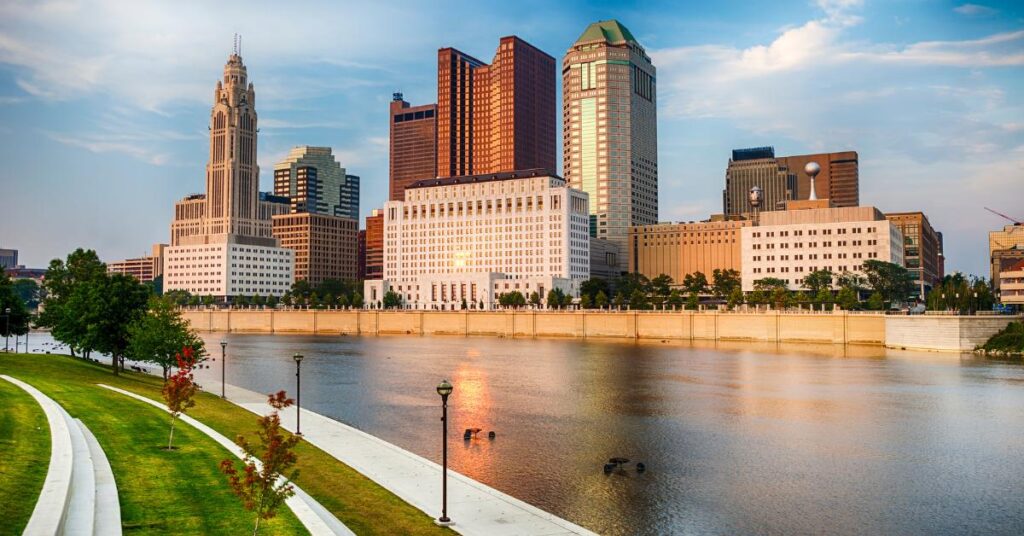How to Control Ohio River Flooding
Ohio River flooding is a serious problem for residents. Flood control methods for rivers can help cities by diverting the Ohio River and reducing damage.

Flood Control Methods for Cities Near the Ohio River
Ohio River flooding is a recurring problem that has devastating impacts on communities near the river throughout the state and several neighboring regions. The persistent flooding causes financial distress for business owners and homeowners alike after damaging property. Flood control methods for rivers such as the Ohio River prevent this damage from happening and give communities peace of mind.
Drainage Systems
One way to prevent Ohio River flooding is by implementing drainage systems in city infrastructures. Drainage systems stop floodwaters from rising to dangerous heights by channeling the water underground into the sewage system or an underground stream. Allocating funds gathered by city taxes to place better drainage systems is an investment in a city’s future and well-being.
Levees, Dams, and Dikes
Building levees, dams, dikes, and other water barrier structures is an effective method of flood prevention. Cities that install permanent or temporary flood barrier structures along the banks of the Ohio River will protect residential and commercial districts from substantial flood damage. Preventative measures like these raise the water line of the river bank, keeping Ohio River flooding in check during rainy seasons.
Basins and Reservoirs
A centralized location for collecting excess water like man-made basins and reservoirs is beneficial for flood control. These bodies of water could be used to collect water from the Ohio River, preventing it from overflowing. After water enters the basin or reservoir during heavy rain, the water is released into channels at a slow, steady rate the environment can accommodate rather than a hefty downpour all at once.
City Flood Warnings
Preparation is essential for handling flood mitigation. Protecting areas from flooding by creating flood risk zone maps and putting emergency protocols in place when Ohio River flooding occurs is important. Cities must issue flood warnings when meteorologists determine an area to be at risk, so citizens can adequately prepare by floodproofing their homes and businesses.
Primary Causes of Ohio River Flooding
The flat geographical makeup of Ohio makes the state flood quickly and easily. Areas such as Louisville are prone to flash flooding due to local streams. The Ohio River Valley is susceptible to flooding because of its low elevation, making it a prime location for rainwater runoff. The size of the river makes total control of flooding a challenging task, but products like TrapBag® can help.
How TrapBag Can Prevent Ohio River Flooding
Emergency Deployment
TrapBag products were designed to be deployed quickly for emergencies. Users simply install them along the bank of a body of water, then start filling them with fill material. TrapBag’s rapid deployment capabilities enable customers to easily utilize our products in natural disaster mitigation measures.
High Water Barrier Capabilities
Our four-foot and six-foot product designs offer height that many flood barrier products do not. High barriers are required for extreme flooding to keep floodwaters away from city properties, and this typically eliminates the need to stack barriers (though our bags are stackable). Large rivers such as the Ohio River often need higher flood barrier products.
Superior Strength
TrapBag was created with durability in mind. Our products are made using a unique, high-strength textile with an opening at the top for fill. The pentagonal shape of our product designs with one sloped side results in heavy-duty support flood barriers that can withstand the high pressure of floodwaters.
Try TrapBag, One of the Best Flood Control Methods for Rivers
Use TrapBag products to mitigate Ohio River flooding. Flood barriers protect life, the environment, and properties from the destruction of flood damage. Order from our shop inventory and enjoy free shipping, and contact us for answers to any questions you may have regarding our flood control methods.
A History of Ohio River Flooding
Louisville Ohio River Flooding
Louisville is vulnerable to Ohio River flooding due to being located on low-lying land. This city experiences frequently recurring flood events. The most severe was in 1937 with floodwater covering 60% of the city and costing an equivalent of $1 billion in damages. The most recent significant Louisville Ohio River flooding event was in October of 2013.
Cincinnati River Flooding
Low areas near the Ohio River in Cincinnati are perpetually at risk of flooding. In 2018, the Ohio River rose to over 60 feet high. This was the worst flood event since the 1937 Ohio River flood, which left one in eight Cincinnati residents homeless and left a fifth of the city covered in water.
Ohio River Flooding in Evansville
Ohio River flooding in Evansville became so severe in 1937 that martial law was declared. Thousands of people were evacuated from the town of Evansville, Indiana. Union Township was completely underwater, and typhoid concerns were prominent. The flood damage repairs cost today’s equivalent of approximately $300 million. The Ohio River in Evansville has been above flood levels more than 40 times since 1940.
Pittsburgh River Flooding
Record Ohio River flooding occurred in Pittsburgh in 1996 around the Upper Ohio River Basin after heavy rain and melting snow. There is significant concern about future flooding events. More rain has fallen in the last two years in the Pittsburgh region than in any other time recorded in the city’s history.
Ohio River Flooding in Portsmouth
The 1937 Ohio River flood also had a tremendous impact on the city of Portsmouth, Ohio. The Ohio River reached a staggering height of 74.23 feet, which is more than 12 feet higher than the city’s floodwall. More than 32,000 people had to evacuate their homes. Waters rose above the level of the floodwall again in 1997 and in January 2005. In 2018, flooding occurred again, and soldiers were asked to assist the city of Portsmouth.
Marietta Ohio River Flooding
Marietta, Ohio has been experiencing Ohio River flooding since 1790. In 1832, floodwaters reached depths of nine feet on Front Street, resulting in the city losing about 20 buildings. A firehouse even floated downriver to Louisville. To this day, there are regular warnings about the Ohio River cresting near Marietta.
Meet the author
Get the Dirt Before the Flood Hits
Stay ahead of flooding, erosion, and disaster response challenges. The Dirt, TrapBag’s monthly newsletter, delivers field-tested tips, real-world case studies, and the latest in barrier technology straight to your inbox.

